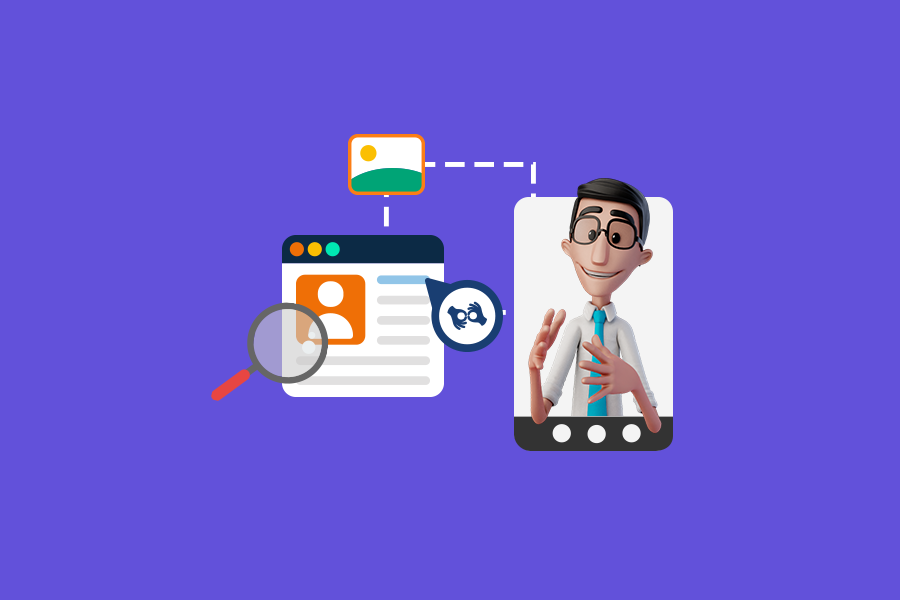
ASL on Websites: how to include it and its importance?

Digital inclusion is an increasingly relevant topic in our society today. After all, our dependence on the internet is only growing when it comes to accessing information, conducting transactions, and communicating. With that in mind, it is essential that everyone has equal access to these resources, do you agree?
In this context, the inclusion of ASL (American Sign Language) on websites plays an essential role, allowing deaf people or those with hearing disabilities to access online content more efficiently, autonomously, and inclusively.
So, come with us to explore the importance of including ASL on websites, the benefits of this practice, and how to implement it in accordance with the Americans with Disabilities Act!
The importance of websites in digital inclusion
As you already know, websites play a very important role in digital inclusion, providing access to information, services, and communication in a much more convenient and efficient way. In fact, it is through web pages that many people with disabilities can feel more integrated into society.
The availability of information online covers countless topics, such as health, education, work, and entertainment. That is, this has practically become a basic resource for the personal and professional development of the population.
Communication is also facilitated by websites, with features such as emails, social networks, messages, and video calls, which are essential for social interaction and the inclusion of people with disabilities.
Besides, more and more services are available in digital form, such as banks, stores, and government agencies. This can make daily life easier and promote the autonomy and independence of these people, as long as these websites are accessible.
As you can see, website accessibility is a very essential aspect in this context, allowing them to be designed to be accessible to all people. This can be done in multiple ways, including the use of accessible design techniques, which we will share more about later on.
Why include ASL on your website
Did you know that 466 million people worldwide have some degree of hearing loss? Of these, at least 60 million have great difficulty hearing or do not hear at all, and many of them rely on Sign Languages as their main form of communication.
Therefore, including ASL on a website is an effective way to make content accessible to deaf people or those with hearing disabilities, as well as being a requirement defined by law. ASL is the natural language of the deaf community in the United States, and its use facilitates and makes communication and information understanding possible for this audience.
In addition, including ASL on a website demonstrates a commitment to diversity and inclusion, which can contribute to a more positive image of the organization in society.
Unfortunately, even in this scenario, only around 2% of American websites are considered accessible to people with disabilities. So, including ASL on your website also becomes an important competitive advantage, making your business open to an audience of millions of individuals.
Americans with Disabilities Act and Web Content Accessibility Guidelines
Both the Americans with Disabilities Act (ADA) and the Web Content Accessibility Guidelines (WCAG) establish some requirements when it comes to digital accessibility for users with hearing disabilities. Do you know what they are?
First of all, the ADA is a US civil rights law that prohibits discrimination against individuals with disabilities in all areas of public life, including jobs, schools, transportation, and public and private places that are open to the general public. Recently, the web was included in the law as being a public space.
Meanwhile, the WCAG is a set of guidelines developed by the World Wide Web Consortium (W3C) to make web content more accessible to people with disabilities. They provide recommendations for making websites more perceivable, operable, understandable, and robust for all users.
We can say that the ADA requires websites to be accessible to individuals with disabilities, including those who use ASL, while the WCAG provides specific guidelines for including ASL accessibility.
In other words, this means that websites must be designed taking into account the needs of the entire audience with disabilities, which includes providing resources such as translating text content into ASL.
How to implement ASL on your website
There are a few different ways to implement ASL on your website. First, you can rely on the assistance of professionals who specialize in ASL translation and interpretation. They can create videos or animations that present website content in ASL, making it accessible to deaf people or those with hearing disabilities.
Another option is to invest in assistive technologies that can facilitate the inclusion of ASL on websites, such as automatic translation software or ASL conversation bots. These tools can be integrated into the website in a simple and efficient way, providing a more inclusive browsing experience for all users.
Types of tools for including ASL on websites
There are several tools available to help include ASL on websites! Check out some examples:
ASL translation plugins
These plugins allow users to activate ASL translation directly on the website, making it easier for deaf people or those with hearing disabilities to access content in a more interactive and controlled way.
A great example is the Hand Talk Plugin, which with the help of its 3D virtual translators, Hugo and Maya, automatically translates text and images with alternative descriptions into Sign Languages.
ASL conversation bots
These bots use animations or videos to present website content in ASL, providing a more interactive and accessible experience for users.
Automatic translation software
These softwares automatically translate website text into ASL, without the need for any action from the user, allowing deaf people or those with hearing disabilities to access content in their native language.
Conclusion
Including ASL on websites is a very important practice to promote digital inclusion and ensure equal access to information for all people, including those with hearing disabilities.
By making your website accessible in ASL, you contribute to the promotion of inclusion and diversity, as well as complying with the requirements of the WCAG. Therefore, including ASL on your website should be considered a priority, investing in tools and resources that can make your content accessible to everyone.
Are you interested in learning more about how our accessibility plugin works? Then talk to Hand Talk specialists to ensure your website is accessible in ASL too!


